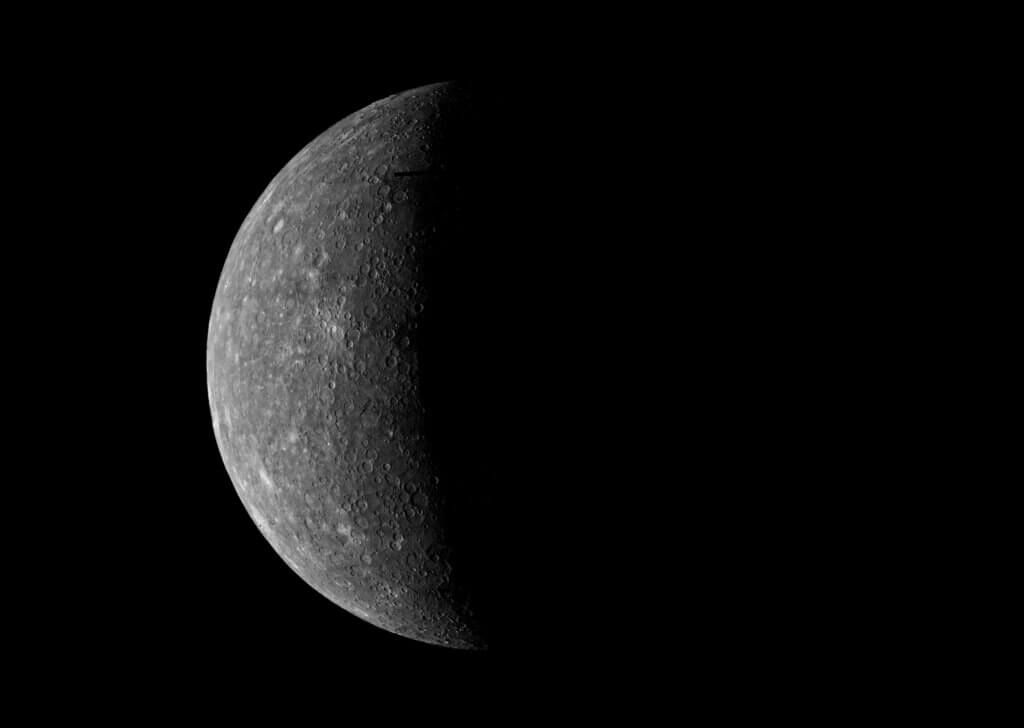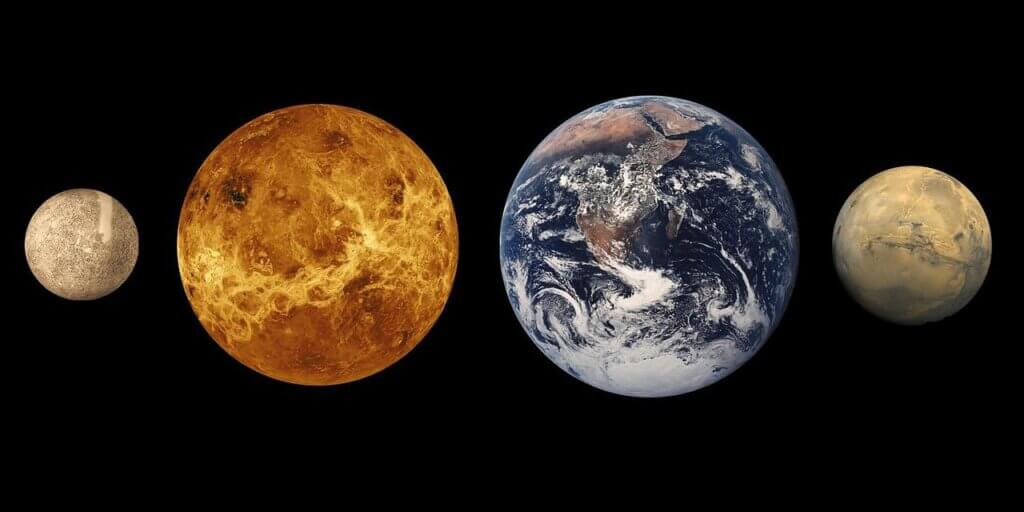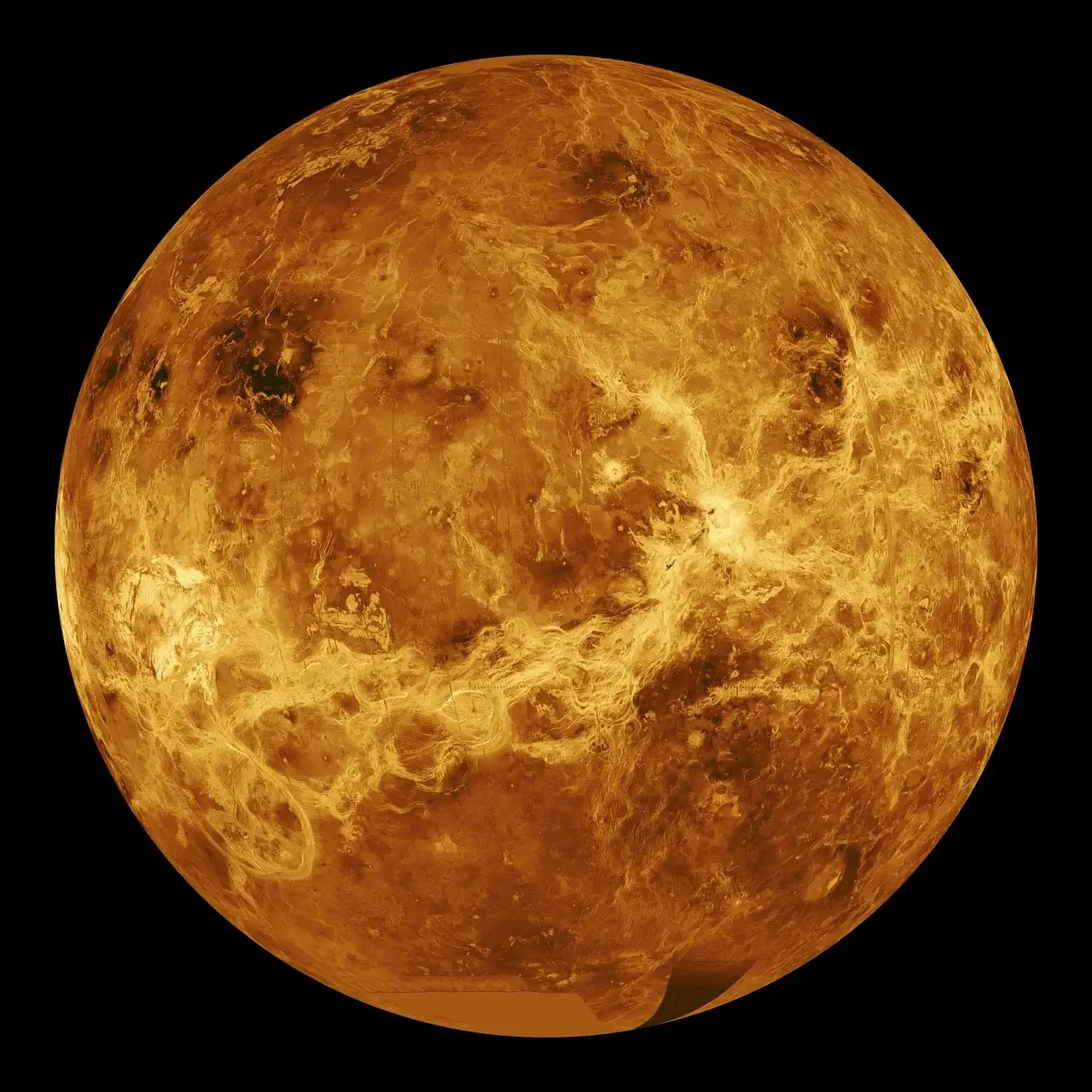What is the hottest planet in our solar system? Any guesses?
As the planet closest to the sun, Mercury is the one people usually name the hottest. If you go by the planets in order you might be surprised to learn that it’s not Mercury, but Venus, which is the hottest!
Besides being the brightest planet, Venus also has a surface temperature that regularly reaches almost 900 degrees Fahrenheit (compare that to Earth’s 57 degrees Fahrenheit!) — making it the hottest of the eight planets in our solar system.
Although humans have not yet been able to visit Venus, there’s a great deal we already know about the planet. Here’s why Venus is the hottest planet in the Solar System.
How Hot Is Venus?
According to NASA and other space research institutions, the surface temperature of Venus ranges from 820 degrees Fahrenheit to a maximum temperature of almost 900 degrees Fahrenheit, with the planet’s average temperature being 867 degrees F.
It’s commonly believed that the planet’s temperature is high enough to melt lead!
Why Is Venus the Hottest Planet?
Venus is the second planet in orbit around the sun. It was the first planet that was explored using a spacecraft called the Venera 7 way back in 1970. The task of the Venera 7 was to measure the temperature of Venus’s atmosphere.

Named after the Roman goddess of beauty and love, this planet is anything but loving. Its environment is so hellish that spacecraft are not usually able to survive on its surface for long.
The Venera 7, for example, was able to last only 23 minutes! It was in 1981, when the Venera 13 traveled through the hot atmosphere of Venus and landed on its surface, that we finally got color photos of Venus. The Venera 13 was able to resist being burned for 127 minutes before it melted and transmissions stopped.
After all of that observation, scientists have found that Venus’s atmosphere is extremely dense and made up of 96% carbon dioxide and 3.5% molecular nitrogen, which contribute to huge heat retention.
During the day, planets absorb energy from the sun, which is why temperatures heat up. At night, the energy is radiated back to space. However, the same is not entirely true for Venus.
Here, the infrared radiation (the re-radiated heat) must get through the dense atmosphere, which is very difficult to do. So, whatever heat the planet absorbs from the sun is stored for long periods of time on its surface.
This phenomenon is called the runaway greenhouse effect. Because of this greenhouse effect, Venus is roughly 700 degrees F hotter than its currently known naturally occurring temperatures.
Early in the Solar System’s history, a thinner atmosphere and cooler sun would have made the temperature of Venus closer to that of Earth, with a potential for supporting life. Today, due to the runaway process, the heat emitted, and the resulting high temperature, Venus is unable to support life.
The Toxic, Thick Atmosphere of Venus
The atmospheric layers surrounding Venus are, as we already mentioned, extremely dense — 90 times denser than that of the atmosphere of Earth. And because Venus’s atmosphere is mainly made up of clouds of sulfuric acid and carbon dioxide, it is an extremely toxic planet.
Together with the pressure of this atmosphere and its composition, an intense “runaway greenhouse effect” is created, which traps the heat of the sun much more quickly and easily than any other planet can.
Not only is there a lack of water on the planet due to this intense heat, the presence of CO2 — which is a noxious gas — gives rise to raging winds that constantly envelop Venus. The highly reflective clouds on the Venus surface look yellow, which is thanks to the presence of sulfur dioxide alongside CO2.
Each day on Venus is incredibly long, amounting to 243 days on Earth. Because of this, a part of the surface of the planet is exposed to solar radiation of higher intensity.
Furthermore, Venus rotates at a very small tilt of only 3.39 degrees with respect to the sun, compared to Earth’s 23.4 degrees. On Earth, this tilt is what causes the changes in seasons.
In the case of Venus, however, the lack of tilt means that even if the planet’s overheated atmosphere did not exist, its surface temperatures would still be fairly consistent throughout the year. All of this, together with the atmosphere’s high heat retention, means that the nights on Venus are just as hot as their days.
Now, that’s definitely not somewhere I wanna live!
Why Mercury Is Not the Hottest Planet in the Solar System
If you know about the positioning of the planets in relation to the Sun, you probably know that Venus and Mercury are the two innermost planets, with Mercury being the closest planet to the Sun than other planetary bodies in our solar system.

The closer you are to the sun, the hotter you will feel, and Mercury is the closest planet to the Sun. So why is Venus hotter than Mercury? After all, as the innermost planet, Mercury is exposed to more sunlight per square foot than neighboring planets, subject to the most intense solar radiation out of all the planets.
In fact, with a temperature of about 800 degrees Fahrenheit, Mercury is almost as hot as Venus.
But Mercury differs greatly from Venus in one key characteristic: unlike Venus, Mercury has a very thin atmosphere – you could say it has no atmosphere.
Because Mercury sits so close to the sun and moves so quickly around it, it lacks an atmosphere where heat can be retained the way it does on Venus.
Like Earth’s atmosphere and Venus’s atmosphere, Mercury, too, has a gaseous layer. However, this layer, composed of oxygen, hydrogen, sodium, potassium, and helium, is extremely thin (scientists refer to it as an “exosphere”), making its heat conduction abilities very poor.
So, when the rays of the Sun hit Mercury, they bounce right back into space instead of staying on the planet’s surface. Compare this to Venus, whose very thick atmosphere traps heat and keeps it there.
What’s more, whichever side of the planet Mercury is not exposed to the sun becomes incredibly cold at around -292 degrees Fahrenheit. That is another dissimilarity Mercury has with Venus, whose nights are just as hot as days.
How Is the Temperature of a Planet Measured?
You might be wondering, after learning all that about Venus, just how did scientists even measure planetary temperatures? Well, that didn’t come easy: it was only through decades of data collection and assessment that we were able to reach a conclusion about the temperature of any planet, including Venus.

Organizations such as NASA have been employing scientists to explore our solar system since the 1950s, using tools like robotic space probes. And between 1961 and 1984, the Soviet Union developed a program called “Venera,” the objective of which was to collect data about the planet called Venus.
Of the 10 Venera space probes that were landed on the planet, none survived for longer than 2 hours due to the extremely hot environment of the planet.
Fast forward to the 21st century, and we have much more advanced space exploration tech at our disposal. In 2005, a craft of the European Space Agency was sent to study Venus’s atmosphere.
These instruments are much more accurate, as they are able to measure heat and light energy from long distances. Temperature-measuring probes are fitted with infrared sensors, which come as close to the planet’s surface as possible in order to take a temperature reading.
Once the readings are taken, they are verified and analyzed based on the distance between the sun and the planet; the composition of the planet’s atmosphere; the planet’s size; and the study of how elements interact with heat.
Fun Facts About Venus:
- Venus Is Sometimes Called “Earth’s Toxic Twin”
The bodies of Earth and Venus are almost equal in size, and the latter planet’s orbit is also closer to Earth than any other planet in the solar system. Furthermore, Venus is not the only planet to have thick clouds in its atmosphere; Earth does too, and they both have relatively young surfaces.
But there, of course, the similarities end – because, as we know, Venus has a hellish atmosphere, while Earth’s high levels of nitrogen and relatively mid oxygen levels allow for life to prosper on it.
- Venus Has Moon-Like Phases
One of the characteristics of Venus that make it so interesting is that it displays phases not unlike those of the Moon. These phases are easily observed from Earth using a telescope, and that’s why Venus has been examined since time immemorial.
- There Are Venusian Volcanoes Abound
There are more volcanoes on Venus than on any planet in the solar system. At present, we know there are over 1,600 volcanoes on the surface of this terrestrial planet, but of course, there are probably many, many more, too small for us to observe with the tools we currently have.
- Venus Transits Are Extremely Rare
Venus is one of the few planets which can be observed as it crosses in front of the sun (also called a transit). Venus transits are very rare, occurring less than once a century. The last pair took place in 2004 and 2012, with the next Venus transit calculated to happen in 2117.
Conclusion
Venus has earned the title of the solar system’s hottest planet for a number of reasons: the planet’s climate, which has dense atmospheric gases composed of carbon dioxide and sulfuric acid; its slow rotation speed; and its high heat retention capabilities.
It would be wise for us to remember that Venus is both the hottest world in the Solar System and a cautionary tale of what happens when greenhouse gases get out of control. Let the toxic, fiery beauty that is Venus remind us that we must take better care of our planet!

